Official state animals are a long-standing tradition in the United States. Each of the 50 states has its own collection of animal representatives that uniquely represent the state’s culture, geography, ecological diversity, and history. New Hampshire has adopted 12 animals as official symbols. Here are all of the animals chosen to represent the Granite State.
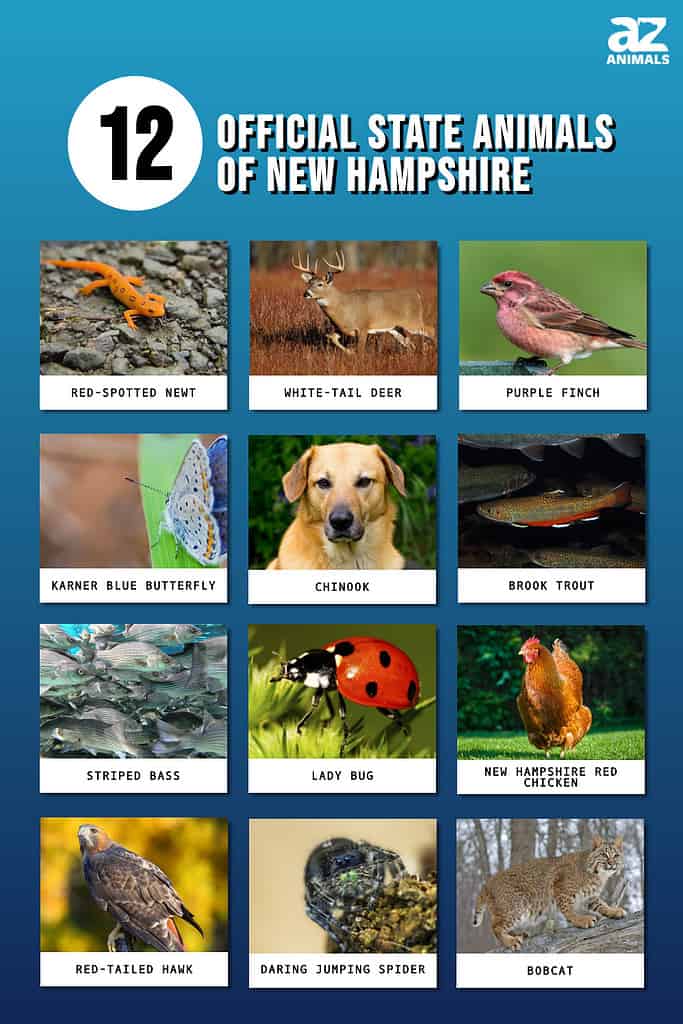
1. State Amphibian: Red-Spotted Newt
The red-spotted newt (Notophthalmus viridescens) is the official state amphibian in New Hampshire. A group of high school students advocated for this official recognition for more than two years. New Hampshire legislators listened and named this newt the official state amphibian in 1985.
The United States has the highest salamander diversity in the world. Seven of the eight salamander families are found within its borders. The eastern U.S., specifically, is home to more native salamanders than anywhere else on earth.
The red-spotted newt is one of the most common salamanders in New Hampshire and one of the most widely distributed salamander species in the United States. This newt is found around permanent bodies of water such as marshes, ponds, and shallow lakes. The red-spotted newt is a harbinger of ecological health, which played a large role in its designation as New Hampshire’s state amphibian.
In its April 25, 1985 edition, the Union Leader newspaper stated the red-spotted newt is “the perfect symbol for ensuring ecology in New Hampshire, as they exist predominantly in the rain and runoff sodden areas heavily affected by acid rain.”
Thirteen other states join New Hampshire in recognizing a salamander species with an official state designation.

The red-spotted newt was designated the state amphibian of New Hampshire in 1985.
©iStock.com/epantha
2. State Animal: White-Tail Deer
The white-tail deer (Odocoileus virginianus) was named the official state animal of New Hampshire in 1983.
The white-tail deer is the most popular state animal in the nation. Eight other states joined New Hampshire in the adoption of the white-tail deer as their official state animal. Those states are Arkansas, Illinois, Michigan, Mississippi, Nebraska, Ohio, Pennsylvania, and South Carolina. The white-tail deer is also the official wildlife symbol of Wisconsin, the official mammal of Georgia (along with the right whale), and the official game animal of Oklahoma. All of these states recognize the importance of this deer to the history, culture, and ecology of their state.
In their adoption of the white-tail deer as their state animal, Hew Hampshire legislators recognized the importance of the deer to both indigenous peoples and early European settlers. The deer was a vital food source and its hide was used in a variety of applications. The deer provides an economic boost to the state through the annual deer hunting season, as well.
There are an estimated 100,000 white-tail deer in the state today.

White-tail deer played a significant role in New Hampshire’s history.
©Paul Tessier/Shutterstock.com
3. State Bird: Purple Finch
The purple finch (Haemorhous purpureus) became the first official animal of New Hampshire when it was named the state bird in 1957.
Purple finches (sometimes known as “American rosefinches”) can be found in New Hampshire throughout the spring, summer, and fall. They migrate south to escape the winter chill and snow.

The male purple finch isn’t purple, but rather a wine red.
©Steve Byland/Shutterstock.com
When the purple finch was proposed as the state bird, the bill faced some opposition. Some legislators preferred the crow or blue jay, birds that remain in the state year-round. There was also a proposal to name the New Hampshire hen as the state bird. A designation of official state poultry would eventually come, but not until 2018. Eventually, the purple finch garnered enough support, and state lawmakers passed the bill naming it the official avian symbol of the state.
The purple finch is a small bird, measuring around six inches in length and weighing less than one ounce. Contrary to its name, the purple finch isn’t actually purple. Instead, the male is a red wine color while the female has a brown backside and a white breast with brown stripes. The vocalizations of the purple finch are a variety of loud, cheery warbles and songs.
New Hampshire is the only state to recognize the purple finch as its state bird.
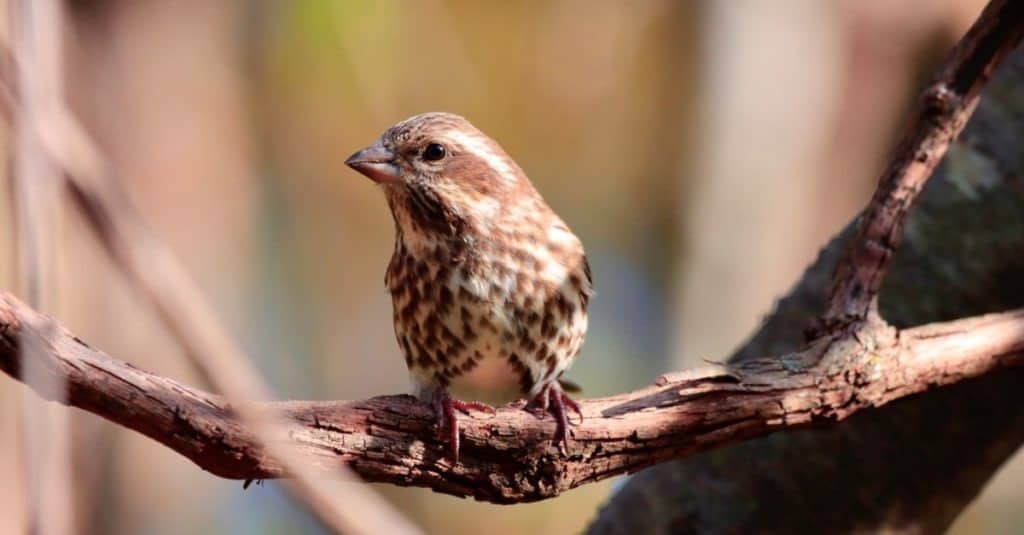
The female purple finch is brown and white.
©Walter Coate/Shutterstock.com
4. State Butterfly: Karner Blue Butterfly
The Karner blue butterfly (Lycaeides melissa samuelis) was named the official state butterfly of New Hampshire in 1992 to call attention to the plight of this lovely butterfly. This was the same year the Karner blue butterfly (sometimes known as the “Melissa blue butterfly”) was classified as endangered under the Endangered Species Act.
This small butterfly once ranged from Wisconsin to the Atlantic coast. Today, populations are only found in small pockets in Michigan, New Hampshire, New York, Ohio, and Wisconsin.
Wild blue lupine (Lupinus perennis) is the only plant Karner blue larvae eat. As the plant is removed from the butterfly’s native habitat, the Karner Blue population declines simultaneously. The Karner blue butterfly was thought to be extirpated in New Hampshire in 1999.
Conservation efforts have since brought the butterfly back to the Granite State, albeit in much smaller numbers than its historic populations. New Hampshire Fish and Game enforce legal protections for the butterfly in the state. Prescribed burns are conducted in the state to reduce leaf litter and to kill non-native plants. This allows openings for native pine barren vegetation to grow, including the wild blue lupine needed for the Karner blue butterfly larvae. It’s all part of the greater effort to bring the state butterfly back to its native New Hampshire.
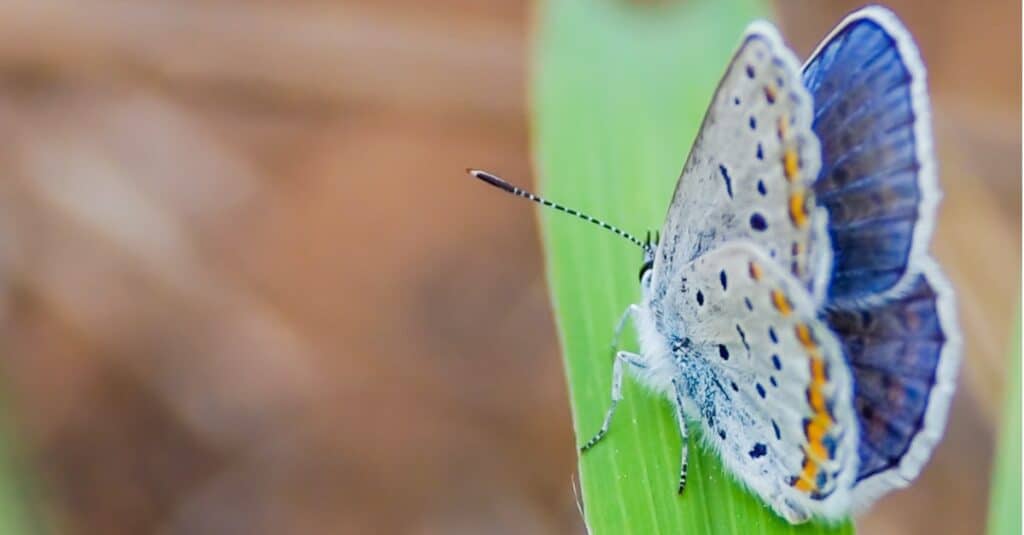
The Karner blue butterfly is coming back to New Hampshire.
©iStock.com/BobGrif
5. State Dog: Chinook
Thirteen states have added a dog to their list of official state animals. The Chinook (Canis lupus) was adopted as the official state dog of New Hampshire in 2009. The idea for the state dog originated with a group of seventh graders at the Ross A. Lurgio Middle School in Bedford.
The Chinook is the only dog bred in New Hampshire. In the early 20th century, a polar explorer from New Hampshire named Arthur Treadwell Walden bred the Chinook to serve as a sled dog.
Chinooks are working dogs that are highly intelligent with a sweet disposition. They are friendly and sociable both with people and other dogs.
The Chinook is a rare breed. In fact, the Guinness Book of World Records listed the Chinook as the world’s rarest dog breed in 1965. By 1981, only 28 Chinooks remained and many were either senior dogs or had been neutered. Only 11 were still suitable for breeding. Three breeders took charge of those 11 dogs and brought the breed back from the brink of extinction. The number of Chinooks has steadily increased ever since, although the breed is still quite rare compared to many other dog breeds.
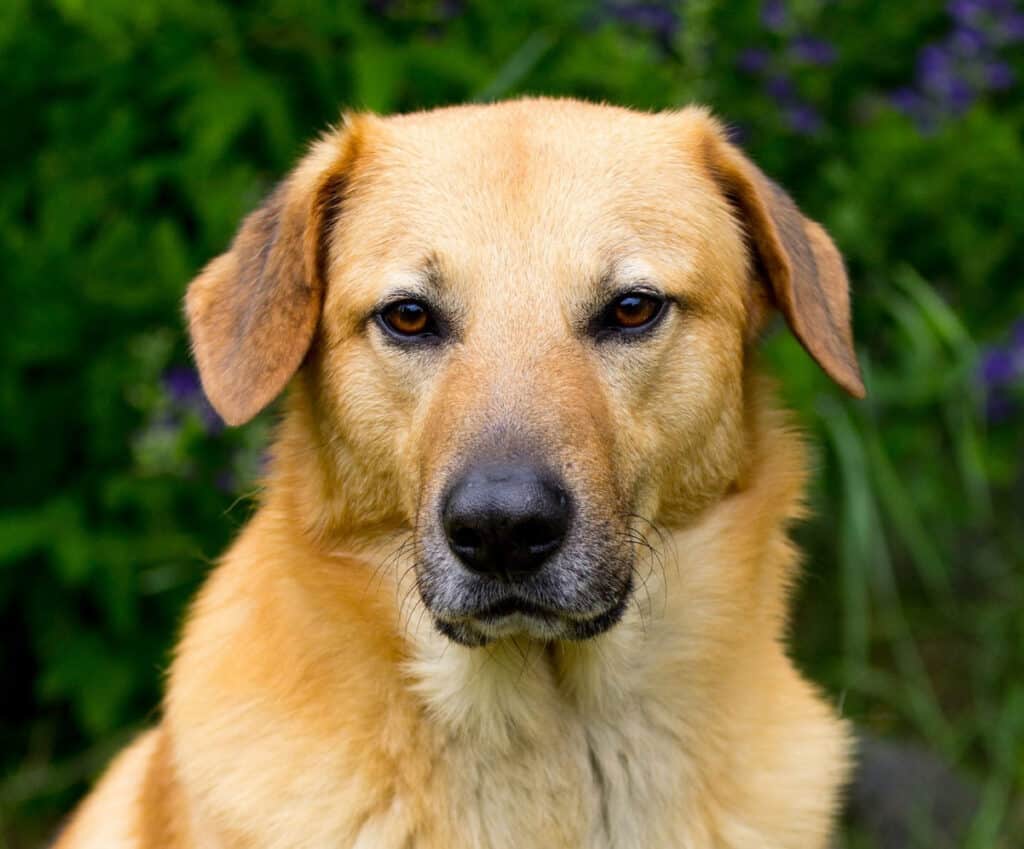
The rare Chinook is the only dog breed to come from New Hampshire.
©iStock.com/Kathleen Riley
6. State Game Fish (Freshwater): Brook Trout
The brook trout (Salvelinus fontinalis) was designated the official freshwater game fish of New Hampshire in 1994. While other non-native species have been introduced into New Hampshire waters, such as brown and rainbow trout, the brook trout is the only trout species native to the state.
Brook trout typically grow around 10-12 inches long and weigh 1-2 pounds. The record catch of a New Hampshire brook trout is the longest-standing fishing record in the state. On May 8, 1911, A. Val Woodruff landed a huge brook trout weighing nine pounds and measuring 25.5 inches long! It’s no surprise the record has stood so long. Many wonder if it will ever be broken.
These trout thrive in New Hampshire’s climate. The cold winters and temperate summers help the brook trout’s watery habitat remain cold. It is rare to find a brook trout in water that exceeds 70°F.
“Brookies” need exceptionally clean water, so these trout have become symbols of conservation for the waterways of New Hampshire, as well as many other states where they are found.
Along with New Hampshire, brook trout have been chosen as state symbols in Georgia, Michigan, New Jersey, New York, North Carolina, Pennsylvania, Vermont, Virginia, and West Virginia.

The brook trout is New Hampshire’s only native trout species.
©M Rose/Shutterstock.com
7. State Game Fish (Saltwater): Striped Bass
When the brook trout was named New Hampshire’s official freshwater game fish, state lawmakers also chose the striped bass (Morone saxatilis) as the official saltwater game fish of the state.
Striped bass, or “stripers,” are named for the black stripes that run down their sides. These fish are the most sought-after coastal fish by New Hampshire anglers.
Striped bass normally grow to 20-34 inches long and weigh 20-40 pounds. The state record striper in New Hampshire was caught on June 26, 1980, when Robert A. Lindholm landed a 60-pound striper measuring 51 inches long!
While the striped bass is the state’s official saltwater game fish, the fish is actually anadromous, meaning it moves from saltwater to freshwater to spawn.
This migratory fish can normally be found in Great Bay from May through October. Striped bass migrate south during the colder months.

Striped bass are the most popular saltwater sportfish in New Hampshire.
©Pelow Media/Shutterstock.com
8. State Insect: Ladybug
A group of fifth-grade students from Broken Ground grammar school in Concord petitioned state legislators to name the ladybug (Coccinellidae) the official state insect of New Hampshire in 1977. After a surprising amount of procedural wrangling, the bill was approved.
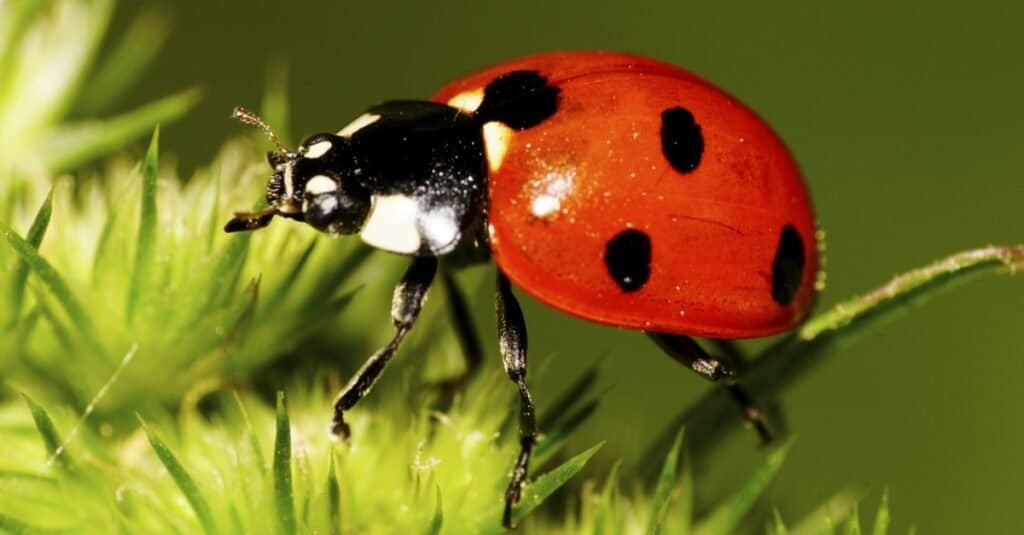
The ladybug has been New Hampshire’s state insect since 1977.
© Sergey/Shutterstock.com
Ladybugs (sometimes known as ladybird beetles) are lovely-looking insects. Depending on the species, ladybugs can include combinations of red, black, brown, yellow, and white. The ecological importance of the insect extends far beyond their aesthetic appeal, though.
These beetles are vital to farmers and gardeners because they eat many destructive pests. The ladybug’s preferred prey is aphids. An aphid infestation can quickly destroy a plant. However, one ladybug can eat up to 50 aphids per day. They also feed on scale, mealybugs, mites, and other destructive insects.
Delaware, Massachusetts, New York, Ohio, and Tennessee also recognize the ladybug as an official state symbol.

One ladybug can eat up to 75 aphids per day!
©iStock.com/Jan Rozehnal
9. State Poultry: New Hampshire Red Chicken
The New Hampshire Red chicken (Gallus gallus domesticus) was named the state poultry of New Hampshire in 2018. A group of fourth-grade students from Canaan Elementary School advocated for the designation. Those students were on-hand when Governor Chris Sununu (R) signed the bill into law. There were also two New Hampshire Red chickens named “Peachy” and “Rusty” that were present at the signing. While official turkey pardons are a tradition, this was believed to be the first time chickens were invited to the governor’s office.
The New Hampshire Red chicken was bred to withstand the harsh winters in New Hampshire. The breed emerged from the Rhode Island Red chicken in the 1930s. The focus was on breeding a chicken that would mature and feather quickly, as well as one that would produce larger amounts of eggs and meat.
Delaware and Rhode Island are the only other states with a state chicken, although both of these states list the chickens as their state birds. New Hampshire is the only state with both a state bird and a separate designation for state poultry.
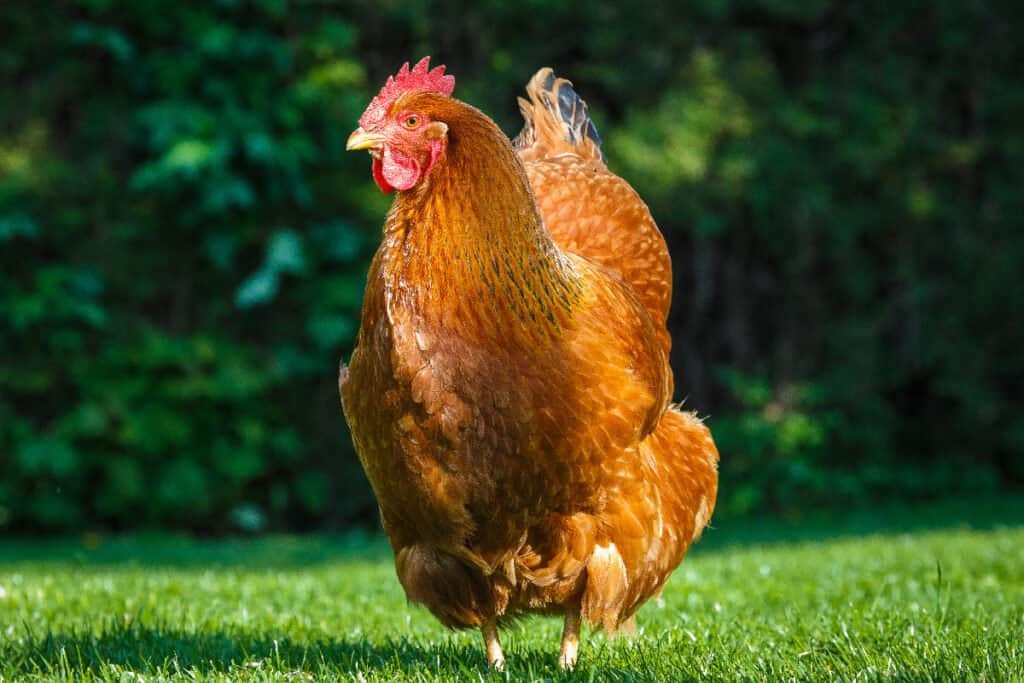
The New Hampshire Red chicken was chosen as the state’s official poultry in 2018.
©Jesper Frehr/Shutterstock.com
10. State Raptor: Red-Tailed Hawk
The red-tailed hawk (Buteo jamaicensis) was designated the official state raptor of New Hampshire in 2019. It was only the second state in the nation to name an official raptor. Idaho adopted the peregrine falcon as its state raptor in 2004.
The proposal for the red-tailed hawk’s official status in New Hampshire originated with a group of fourth-grade students from Lincoln Akerman School in Hampton Falls in 2015. Many believed the legislation would be a slam dunk. It was anything but that.
Defeated
With the fourth-grade students in attendance, the bill was killed by a vote of 133-160. During the legislative session, many believed some lawmakers mocked not only the bill but the children themselves. Spurious comments were made about the hawk, with one lawmaker even comparing the red-tailed hawk’s predatory practices to human abortion.
The defeat of the bill, and especially some of the comments made on the floor of the New Hampshire State House, made national news and was fodder for late-night comedy shows. Many New Hampshirites found the whole scene distasteful, if not downright humiliating.
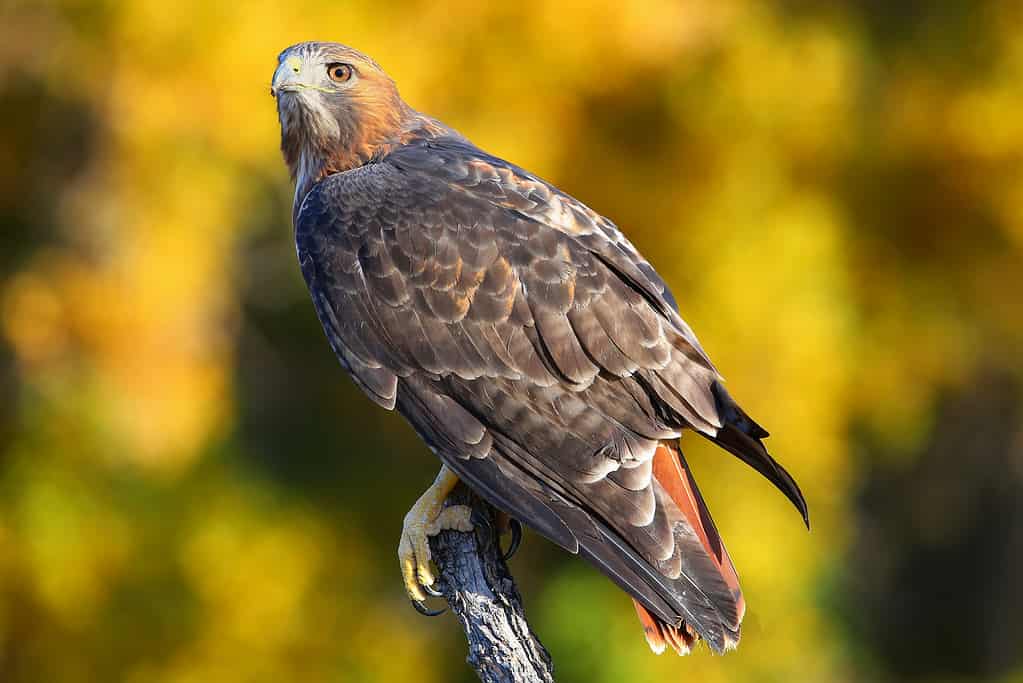
The process of choosing New Hampshire’s state raptor was almost as wild as the bird itself!
©iStock.com/Donyanedomam
Victory
But the young students who proposed the legislation learned an unexpected lesson in perseverance. Four years later, they were at the State House again. Now in eighth grade, the students were all wearing t-shirts emblazoned with the words, “Our Second Try to Live Free & Fly,” along with a picture of a red-tailed hawk.
This time the bill would easily pass in the House by a vote of 333-11. It was also approved by the Senate. Governor Sununu signed the bill into law on June 14, 2019. The students, as well as a red-tailed hawk, were present at the signing. It was a long, and very strange road to name an official state animal, to be sure.
The red-tailed hawk’s range encompasses all of the continental United States and Mexico. It stretches as far south as Central America and covers much of Canada and Alaska to the north.
The red-tailed hawk is the most numerous and widespread of the 25 hawk species found in the United States. The raptor feeds on small mammals and reptiles. Squirrels, rabbits, voles, and rodents are among its preferred prey.
The vocalization of the red-tailed hawk is a typical raptor scream. Many times when an eagle or hawk appears in a movie or TV show, a red-tailed hawk’s scream is used as the soundtrack.
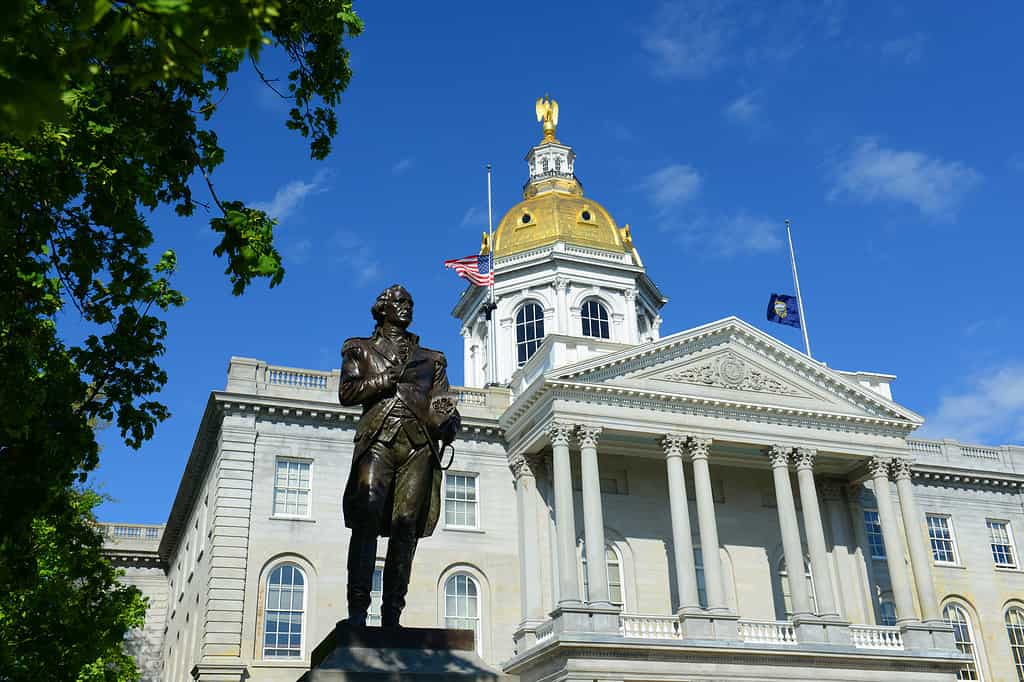
State legislators passed the red-tailed hawk bill in 2019 after a long and highly-publicized defeat four years earlier.
©iStock.com/jiawangkun
11. State Spider: Daring Jumping Spider
The adoption of a state spider was not nearly as long and dramatic as the selection of a state raptor. The daring jumping spider (Phidippus audax) was designated as the state spider of New Hampshire in 2021.
The daring jumping spider (also known as the bold jumping spider) was proposed for official state designation by Tara Happy and her third-grade class at Hollis Primary School. The class researched different spiders before choosing the daring jumping spider. They then lobbied New Hampshire lawmakers to adopt the arachnid as the official state spider.
This spider features a round cephalothorax and an ovoid abdomen. It is normally black with a white triangle on its back with two spots beneath it. The daring jumping spider has extraordinary eyesight which it uses to target prey or to locate a potential mate. The spider has more acute eyesight than a cat.
In their presentation to lawmakers, the New Hampshire students noted how the arachnid is hardy enough to endure the harsh winters in the state. They also emphasized how this jumping spider creates a “parachute” to fly to a new home. The children pointed out that the spider seems to embody New Hampshire’s motto, “Live Free or Die.”
Perhaps not wanting a repeat performance of the now-infamous 2015 vote on the red-tailed hawk, the bill for the daring jumping spider cleared the House on a voice vote and passed the Senate unanimously. Governor Sununu signed the legislation on June 11, 2021.

The daring jumping spider possesses excellent eyesight and leaping abilities which it uses to catch its prey.
©Mircea Costina/Shutterstock.com
12. State Wildcat: Bobcat
The bobcat (Lynx rufus) is yet another official animal that was originally proposed by New Hampshire schoolchildren. Teacher Audrey Carrel and a group of fourth and fifth-grade students from Well School in Peterborough championed the bobcat for official state recognition. The legislation passed and was signed into law in 2015.
The bobcat has the largest range of all North American felines, stretching from southern Canada to southern Mexico. The cat adapts to a variety of habitats, including forests, mountain woodlands, swamps, deserts, and even suburban areas. However, even with such a large and varied range, this medium-sized cat is elusive and seldom seen by humans.
It is closely related to the Canada lynx but is smaller in size and darker in color. The bobcat also has a shorter “bobbed” tail, which gives the cat its name.
The bobcat’s preferred prey are small mammals such as rabbits and rodents. It will also prey on birds and reptiles. It has even been known to take down deer. While not the first choice, this cat is not afraid to take on prey much larger than itself.
The bobcat resides in all of New Hampshire’s ten counties. The bobcat is also the mascot of the University of New Hampshire. The athletic teams at the school are known as the Wildcats.
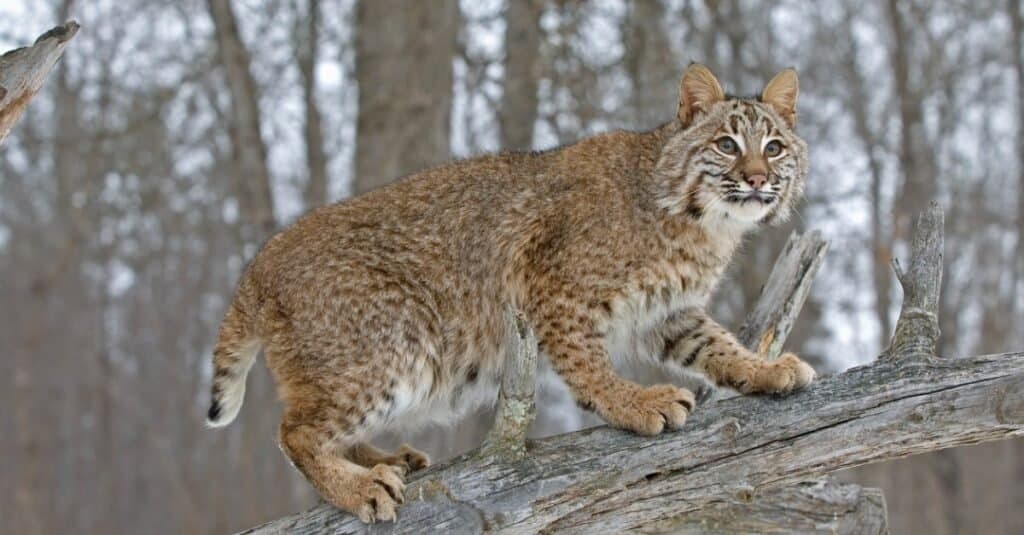
Bobcats are found in every New Hampshire county.
©iStock.com/JohnPitcher
The photo featured at the top of this post is © iStock.com/cmcneill17
Thank you for reading! Have some feedback for us? Contact the AZ Animals editorial team.






